
From ancient times to the present, some rulers have dominated their countries with iron fists. Far from being “ benevolent dictators,” these ruthless leaders have quashed dissent and cemented their power with programs that led to thousands and sometimes millions of deaths from executions, ill-fated wars, or widespread starvation due to poor economic management.
To compile a list of the most ruthless rulers in history, 24/7 Tempo reviewed biographies and historical articles on several sites, among them History and Britannica.
Click here to read about the most ruthless rulers in history
Not all are men. There are three women on the list: Wu Zetian ruled China from 690 to 705. She maintained her power for that long by executing her rivals, including family members. Between 1828 and 1861, Madagascar’s Ranavalona I was known as Ranavalona the Cruel for her systematic torturing and killing of opponents and foreigners. Mary I reigned over England and Ireland from 1553 to 1558. Known as “Bloody Mary,” she burned Protestant heretics at the stake. (These are the most famous female rulers in history.)
Eventually, citizens in many countries have grown weary of their rulers’ cruelty and overthrown them. Nicolae Ceaușescu was tried and executed for his crimes soon after the Iron Curtain fell in Romania. Libya’s Muammar Gaddafi met a similar fate after a rebel uprising. (Here’s a list of 26 rulers who were killed by their own people.)
Yet Kim Jong-un remains in power in North Korea, threatening the world with nuclear weapons and keeping his countrymen in line with repressive and lethal tactics – for now.
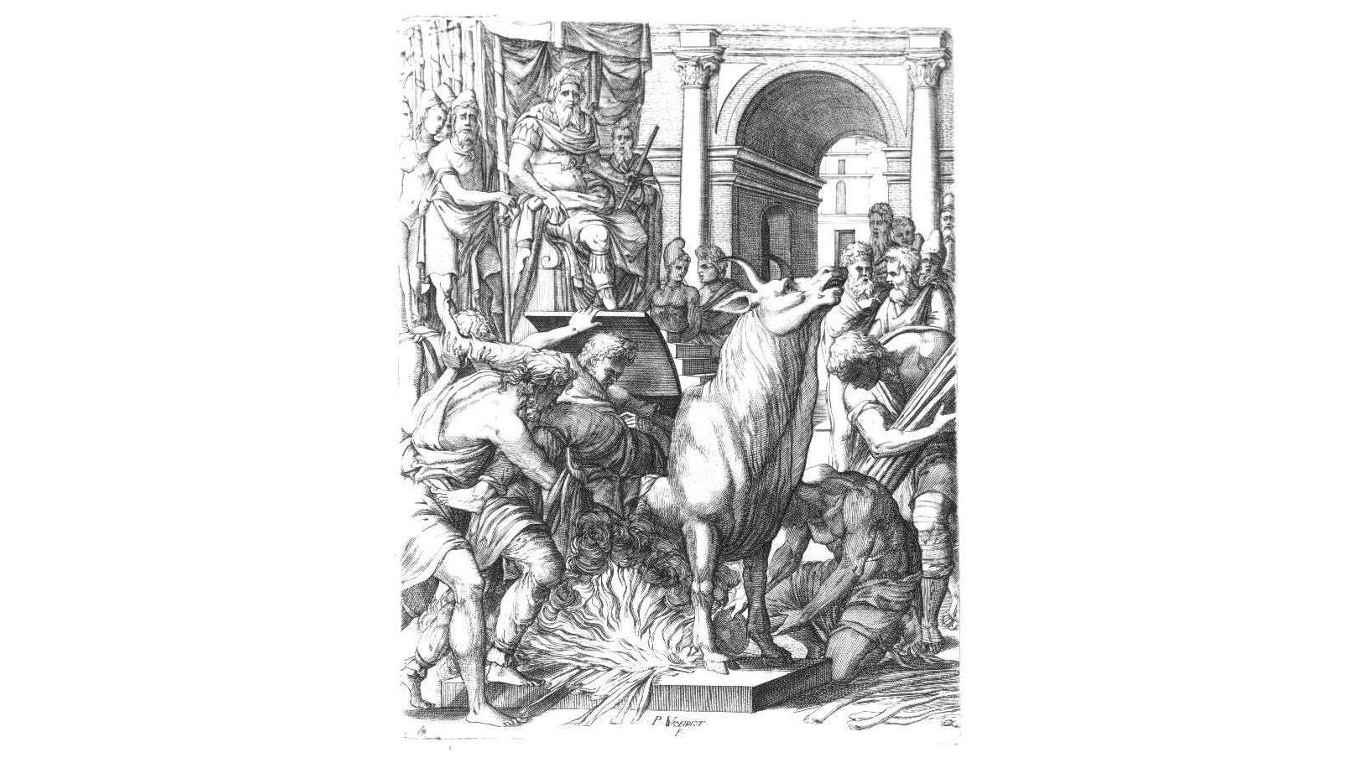
Phalaris
> Country: Agrigento (Sicily)
> Time in power: 570-554 B.C.
Phalaris, tyrant of Acragas (now Agrigento) in Sicily, was notorious for his cruelty. He is said to have roasted his victims alive in a bronze bull and to have met the same fate himself after being overthrown.
[in-text-ad]

Qin Shi Huang
> Country: China (Qin dynasty)
> Time in power: 221-210 B.C.
Qin Shi Huang, who was said to have been unforgiving in his efforts to expand his power and was known for persecuting scholars and burning books, created the first unified Chinese empire, although it collapsed soon after he died.
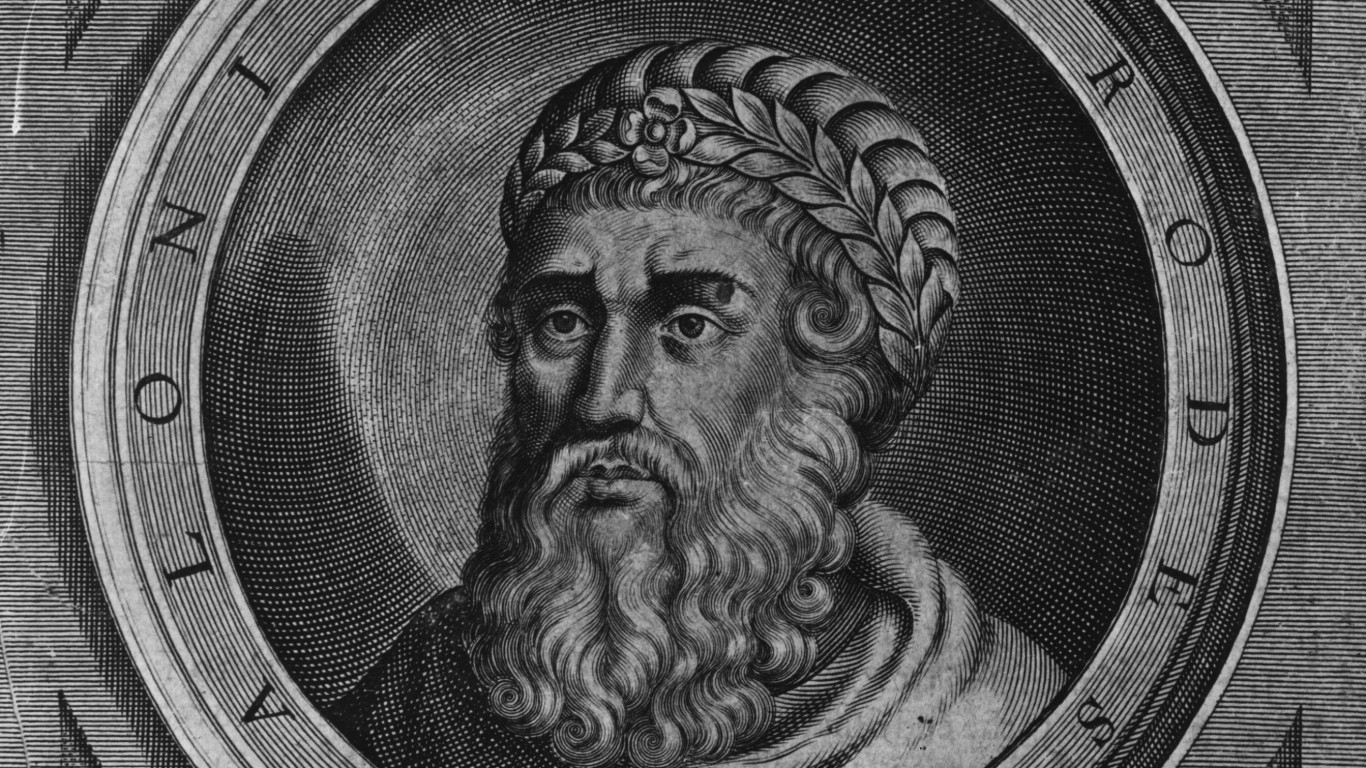
Herod
> Country: Herodian kingdom of Judea
> Time in power: 37-36 B.C.
Herod was a Roman client king of Judea. He appears in the biblical Gospel of Matthew as the ruler who ordered the Massacre of the Innocents at the time of the birth of Jesus Christ.
Caligula
> Country: Ancient Rome
> Time in power: 37-41
Caligula is known as much for decadence as for mismanagement. Soon after he ascended to the throne, he depleted the empire’s treasury. He then extorted prominent Roman citizens for cash and confiscated their estates. The Roman public tired of his erratic behavior and he was murdered by members of the Praetorian Guard.
[in-text-ad-2]

Nero
> Country: Ancient Rome
> Time in power: 54-68
Nero was the nephew of Caligula and was perhaps even more ruthless. He was known for his murders, debaucheries, and casual cruelty, and for supposedly playing a fiddle while Rome burned during the great fire of 64 A.D. (though this may have been negative propaganda from one of his rivals).

Attila the Hun
> Country: Hunnic Empire
> Time in power: 434-453
Attila was a tribal leader who became one of the most powerful leaders in world history. He was known for his attacks on the Roman Empire and for destroying many of the cities he conquered.
[in-text-ad]
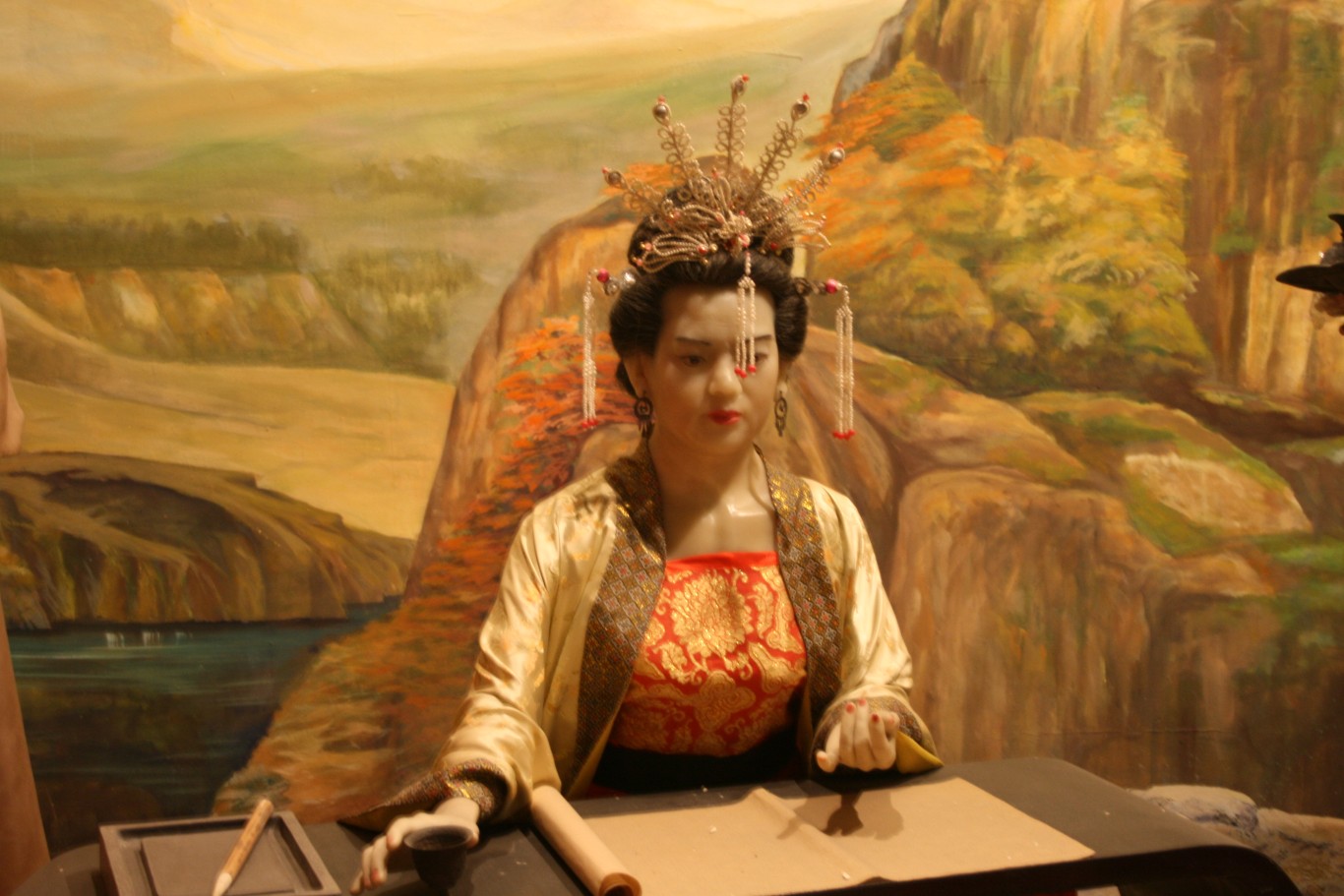
Wu Zetian
> Country: China (Tang dynasty)
> Time in power: 690-705
Wu Zetian is one of the few women on our list. She ruled China for more than half a century and was known for mercilessly eliminating her rivals, including family members.
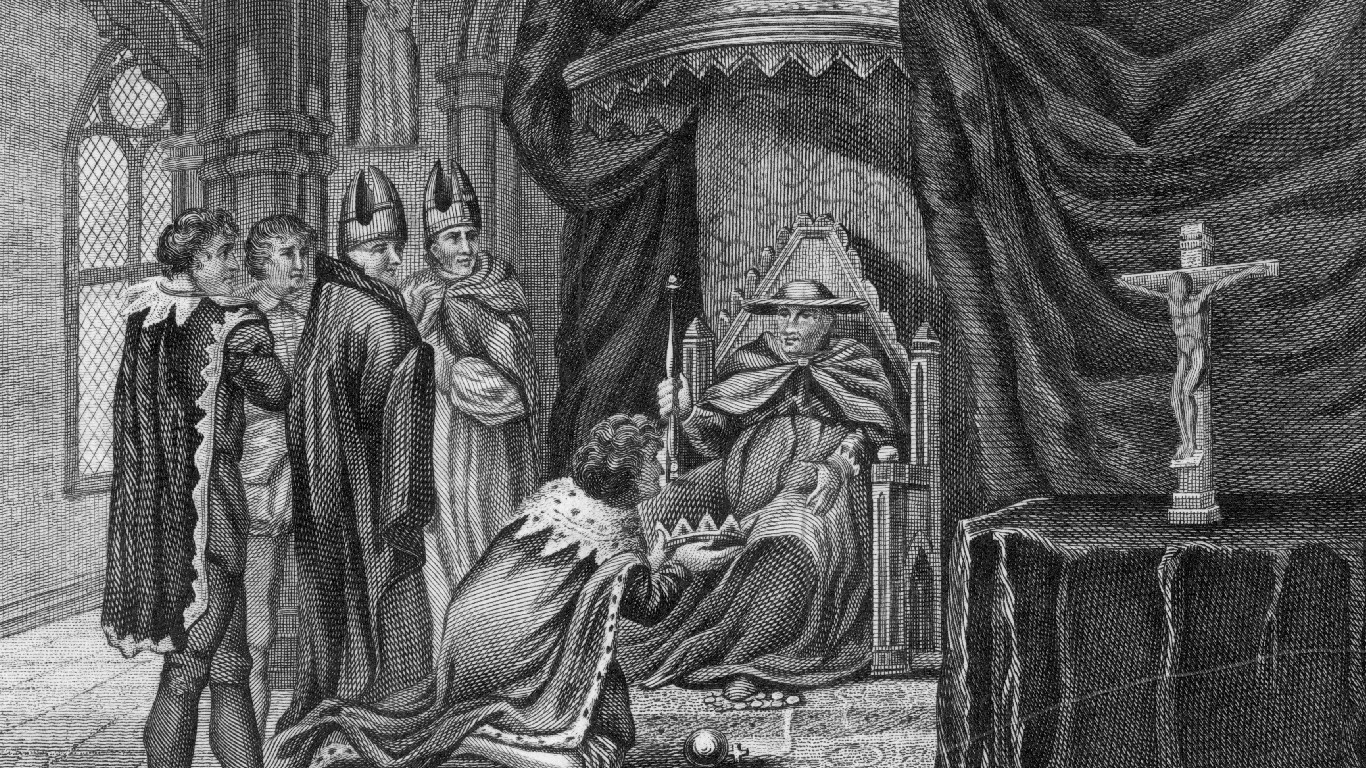
John I
> Country: England
> Time in power: 1199-1216
John I, known as “Bad King John,” known for his cruelty, ruled England in the early 13th century. He’s familiar to many people as the villain of the Robin Hood stories.
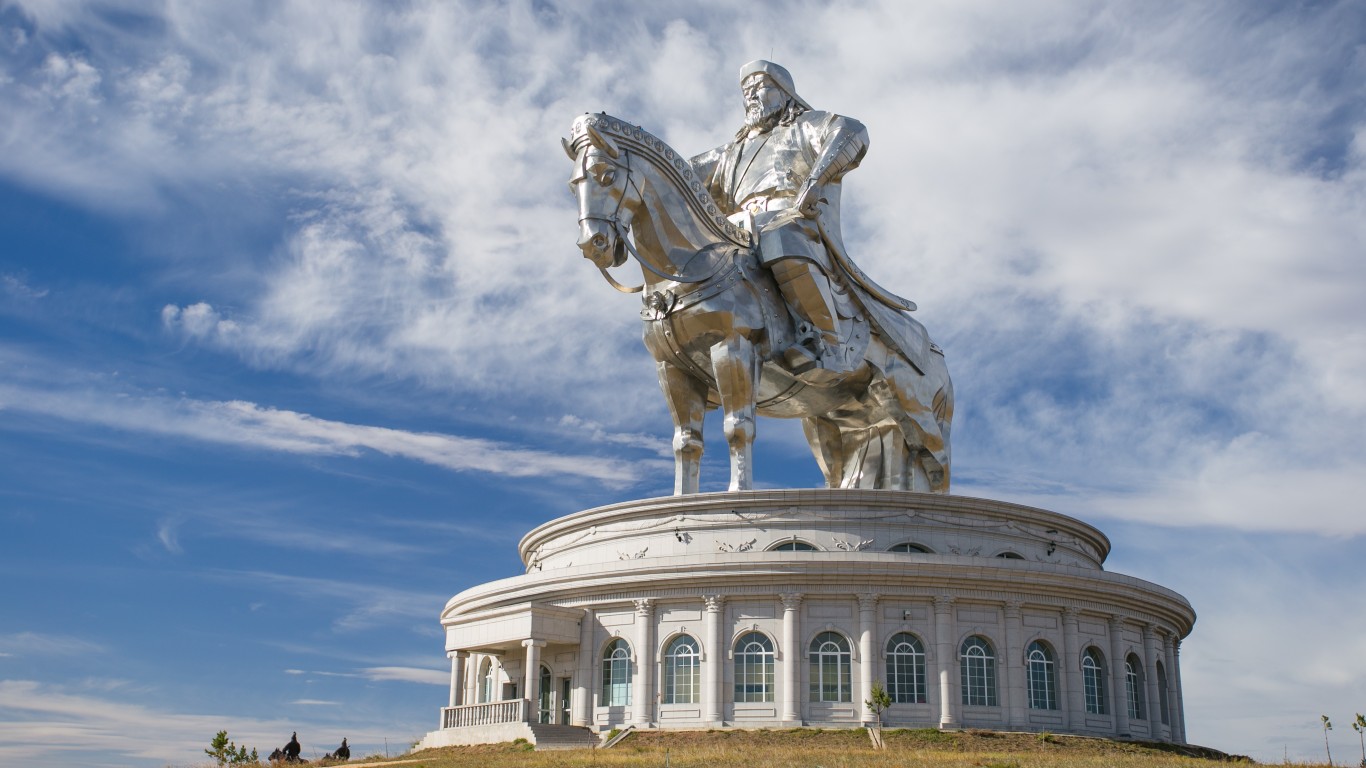
Genghis Khan
> Country: Mongolian Empire
> Time in power: 1206-1227
At the peak of his powers, Genghis Khan controlled between 11 million and 12 million square miles of contiguous territory, an area about the size of the African continent. His empire stretched throughout Central Asia and China, but to gain that empire, he slaughtered many in his path. Yet he is also known for expanding religious freedom, abolishing torture, supporting international trade, and establishing the first international postal system.
[in-text-ad-2]
Timur
> Country: Timurid Empire
> Time in power: 1370-1405
Timur, also known as Tamerlane, was a Mongol ruler more than 150 years after Genghis Khan. Millions of people are thought to have died as a result of his military campaigns.
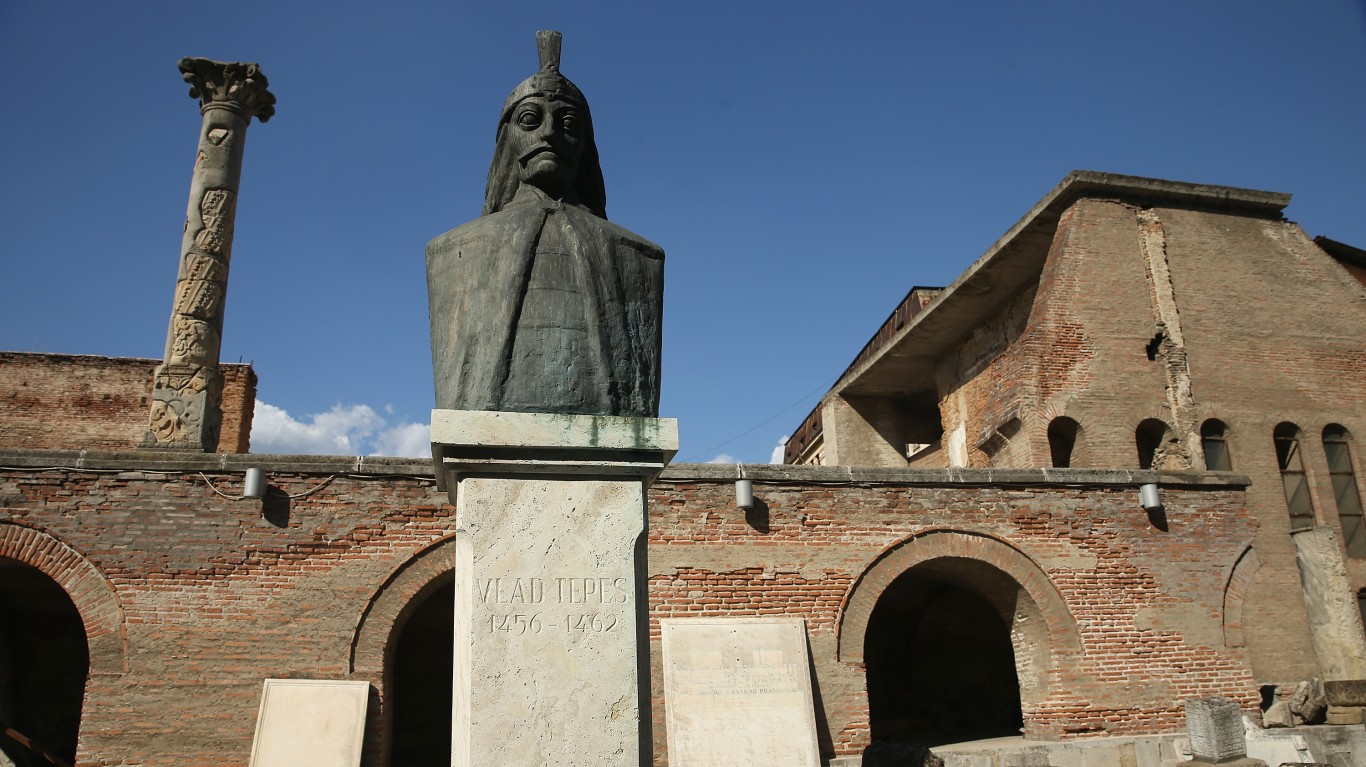
Vlad Tepes
> Country: Wallachia (Romania)
> Time in power: 1448, 1456-1462, 1476-1477
Vlad Tepes was known as “Vlad the Impaler” because of his preferred method of dealing with his opponents. He’s said to have inspired Bram Stoker’s character Dracula.
[in-text-ad]

Henry VIII
> Country: England
> Time in power: 1509-1547
Henry VIII’s wish to father a male heir led him to pursue an annulment from his first wife, Catherine of Aragon, mother of his daughter, Mary. To wed his next wife, Anne Boleyn, he needed an annulment from the Pope, which wasn’t given. Henry VIII then broke from the Catholic Church and claimed that as head of the Church of England, he didn’t need the Pope’s permission to marry. When Boleyn didn’t produce a son, she was executed for an apparently trumped-up charges of treason and adultery, as was another of his six wives, Anne of Cleves.
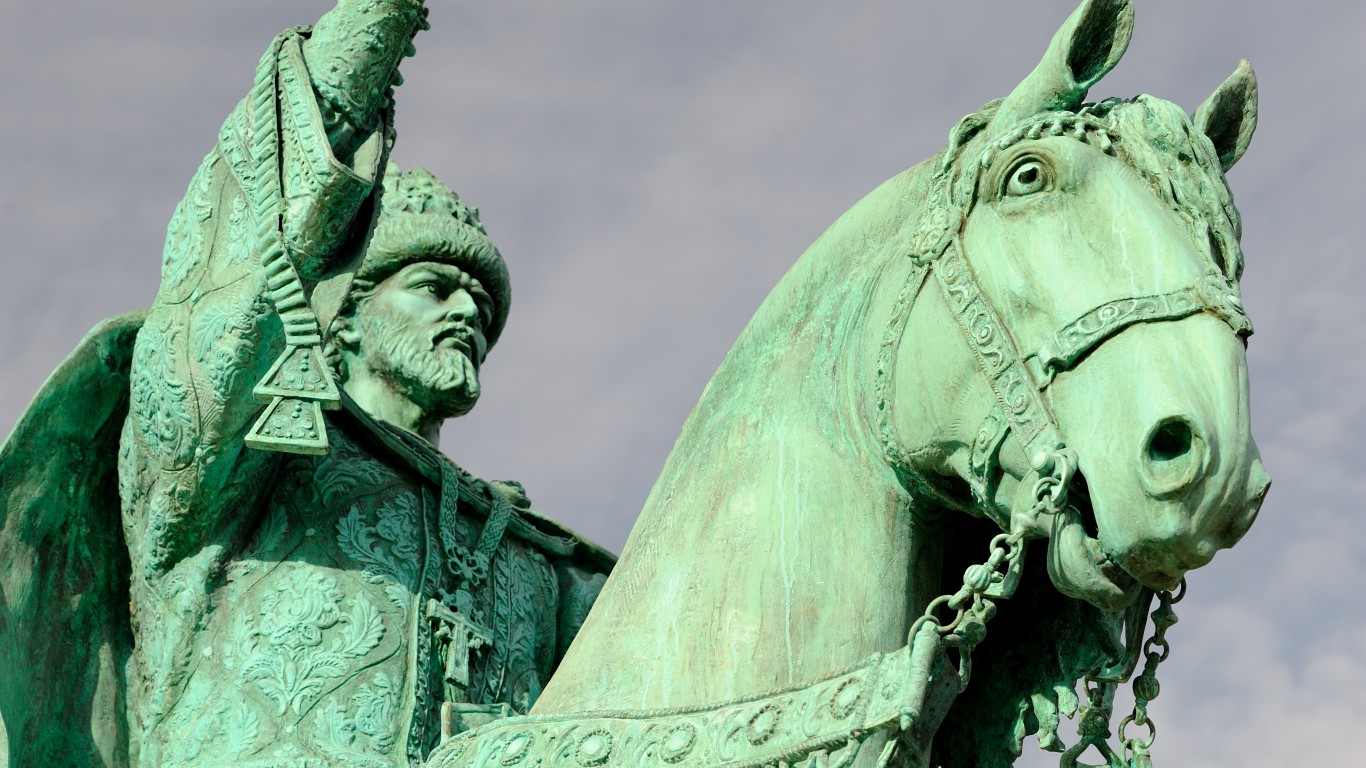
Ivan the Terrible
> Country: Russia
> Time in power: 1547-1584
Ivan the Terrible was the first Moscow ruler to make himself Tsar of all Russia. He transformed it from a medieval country into an empire at immense cost to its people.

Mary I
> Country: England and Ireland
> Time in power: 1553-1558
Mary I was the first queen of England to rule in her own right. She’s known as “Bloody Mary” for her persecution of Protestant heretics, whom she burned at the stake.
[in-text-ad-2]
Tokugawa Ieyasu
> Country: Japan
> Time in power: 1600-1605
Although Tokugawa Ieyasu united Japan after a long period of civil war among the states, he could be ruthless. He grabbed land from his enemies and gave it to his supporters. The government controlled by the Tokugawa family ruled Japan until 1868.
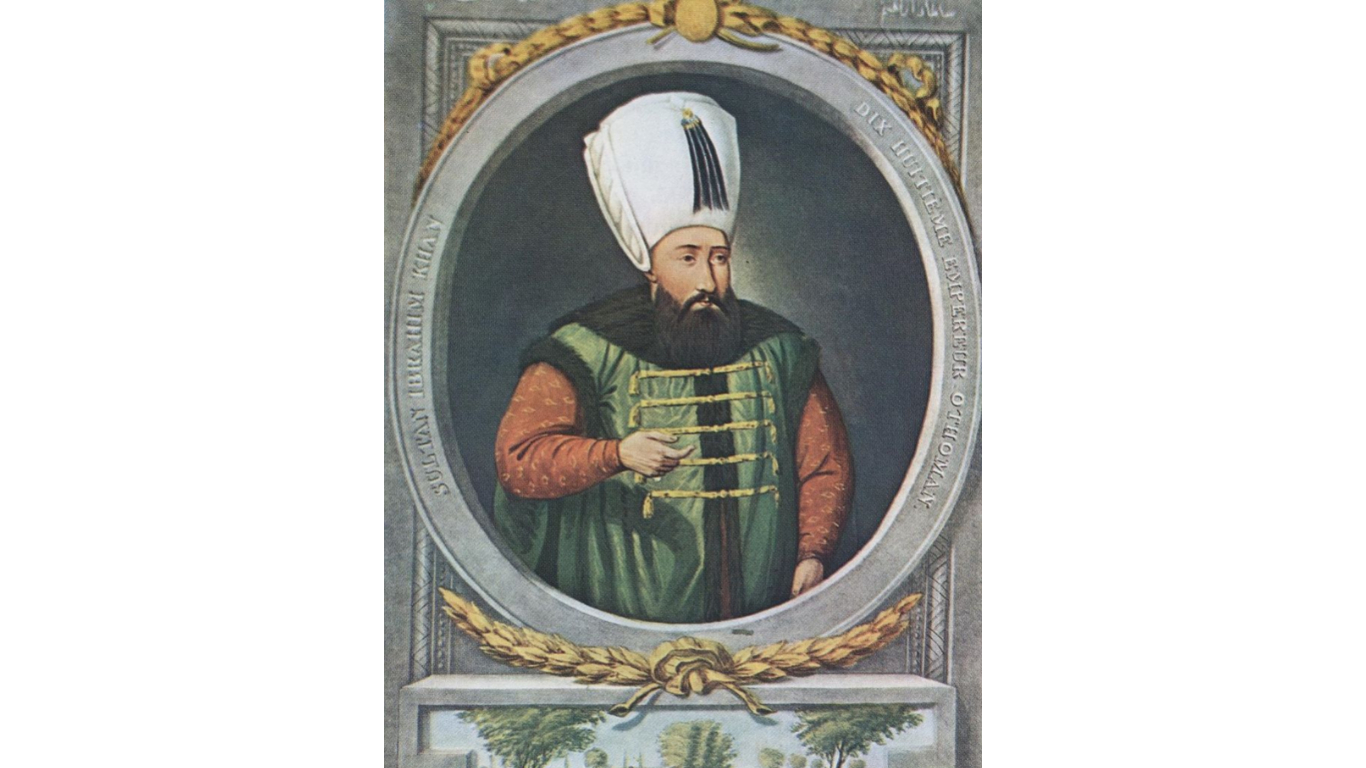
Ibrahim
> Country: Ottoman Empire
> Time in power: 1640-1648
The reign of the Ottoman sultan Ibrahim, also known as Ibrahim the Mad for his erratic behavior, was marked by instability, war, and rebellions. His extravagant spending led to high taxes, which eventually sparked an uprising among religious leaders. After being ousted, he was executed.
[in-text-ad]

Maximilien Robespierre
> Country: France
> Time in power: 1792-1794
A French lawyer, Maximilien Robespierre was a central figure in the French Revolution of 1789-1799. As the leader of the powerful Committee of Public Safety, he oversaw the Reign of Terror, a period when thousands of counter-revolutionaries were executed between September 1793 and July 1794. In 1794, he was overthrown and guillotined.

Ranavalona I
> Country: Madagascar
> Time in power: 1828-1861
Known as Ranavalona the Cruel, Ranavolona I came to power after the death of her husband. To secure the throne, she killed any potential rivals. During her reign, she tortured and murdered her own subjects as well as foreigners.
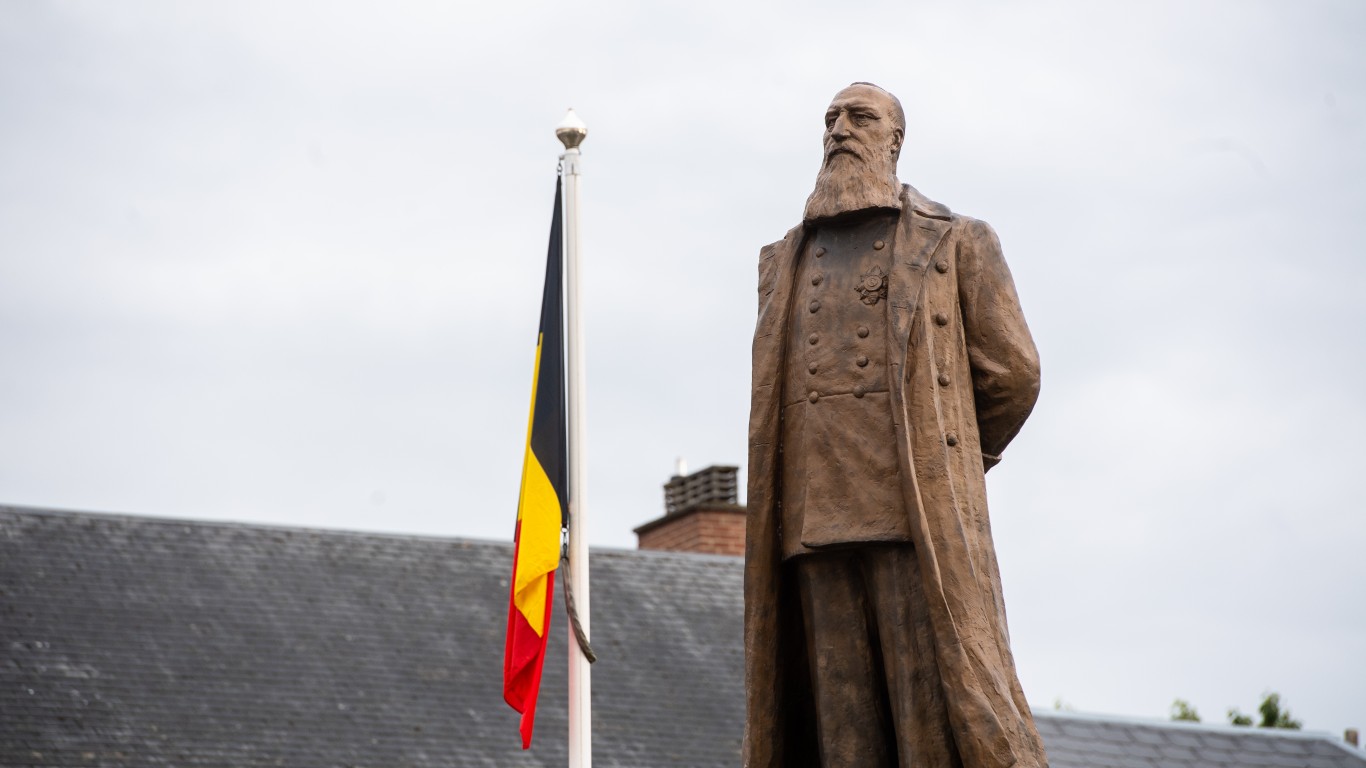
King Leopold II
> Country: Belgium
> Time in power: 1865-1909
King Leopold II of Belgium ruled the Congo Free State as a personal possession rather than as a colony. The population was reduced by a half due to executions, illness, and malnutrition during his reign.
[in-text-ad-2]

Mehmet Talat Pasha
> Country: Ottoman Empire
> Time in power: 1913-1918
A statesman and leader of the Young Turks movement, Mehmet Talat Pasha was instrumental in the deportation of Armenians from the Ottoman Empire’s eastern lands, an operation that led to the deaths of 600,000. Soon after the end of World War I, he fled to Germany where he was assassinated – by an Armenian.
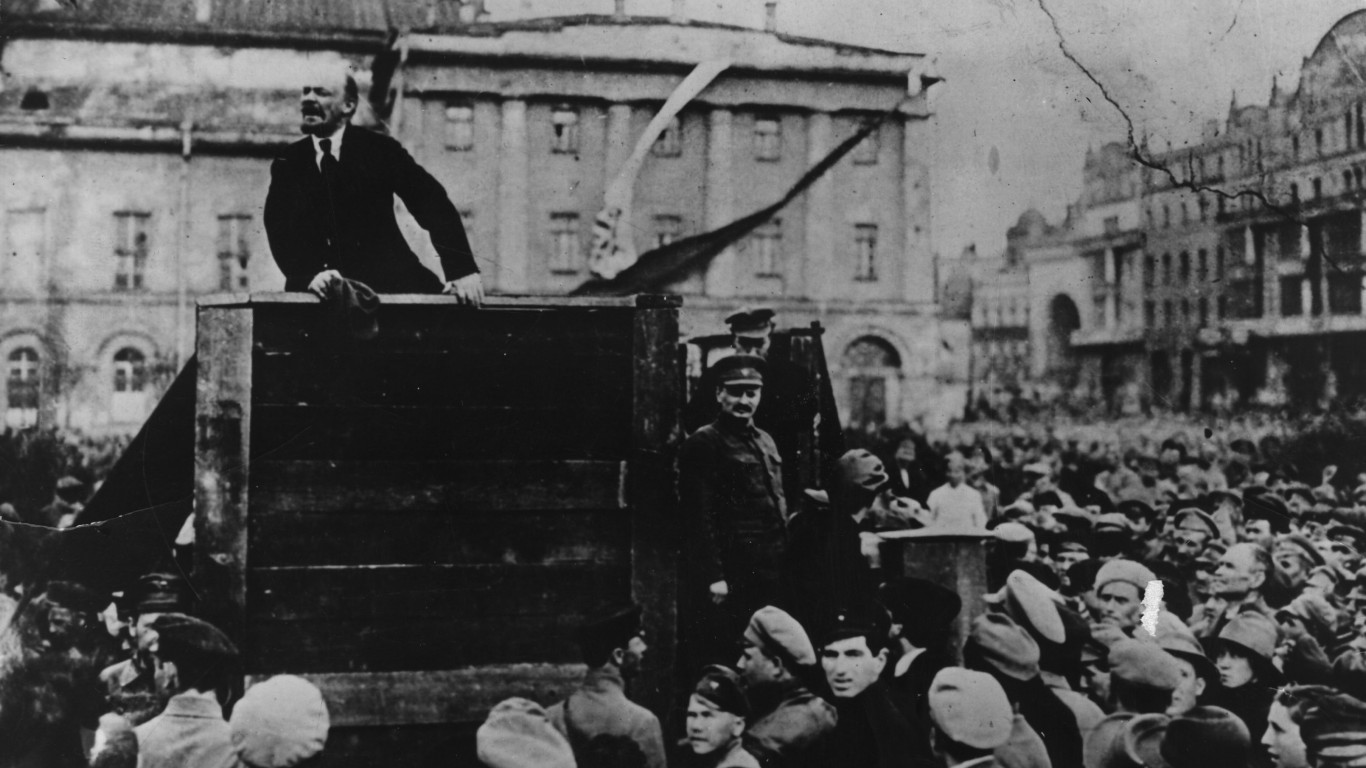
Vladimir Lenin
> Country: Soviet Union
> Time in power: 1917-1924
Vladimir Lenin founded the Communist Party of the Soviet Union (Bolsheviks) and was the leader of the Russian Revolution of 1917. After coming to power, he organized the Cheka, Russia’s first secret police, which rounded up and reportedly killed 100,000 political opponents during a period known as the Red Terror in 1918.
[in-text-ad]

Benito Mussolini
> Country: Italy
> Time in power: 1922-1943
Strongly anti-socialist, Benito Mussolini paved the way for his eventual takeover of Italy by organizing a band of black-shirted thugs who harassed, beat, or killed perceived socialists. His rise to power mirrored that of Adolf Hitler. During World War II, both formed an alliance that would be ruinous for both countries.
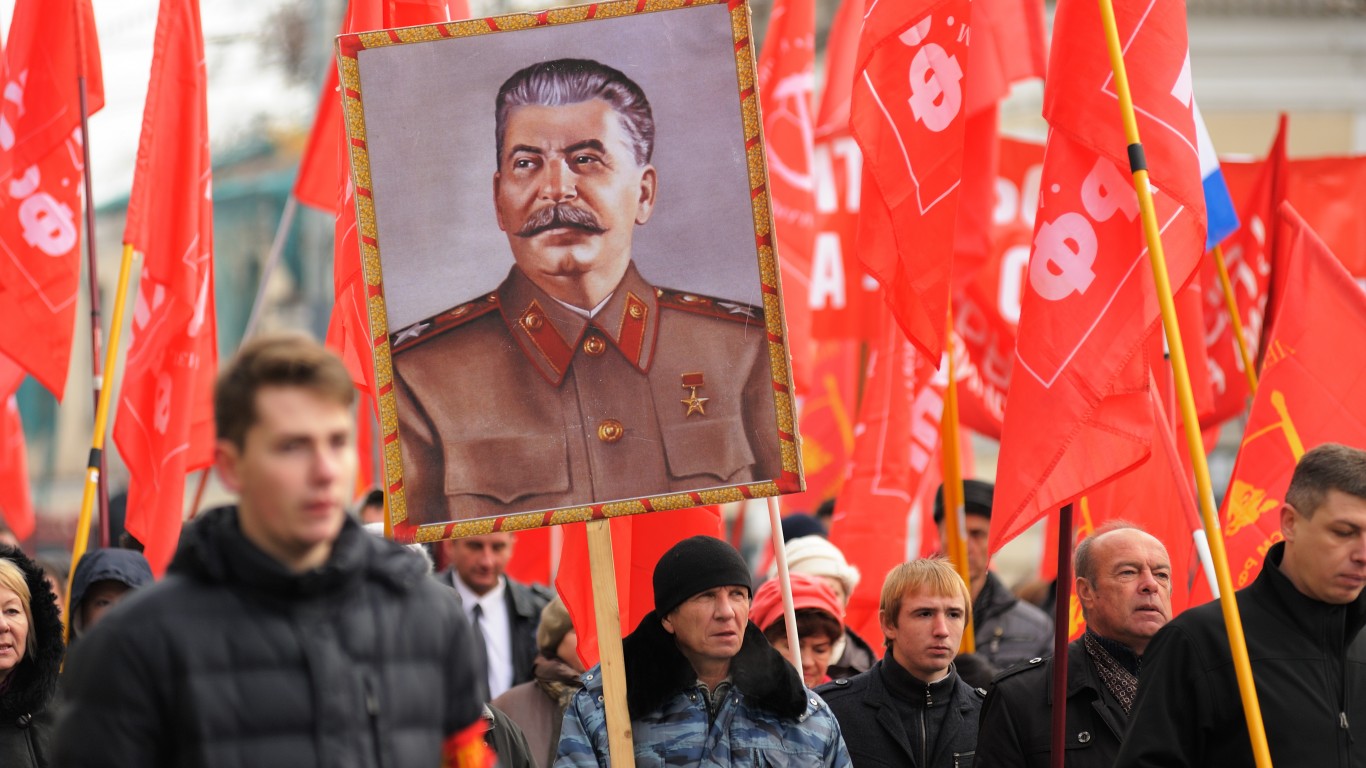
Joseph Stalin
> Country: Soviet Union
> Time in power: 1922-1953
Joseph Stalin ruled the Soviet Union through terror for three decades. In that time tens of millions of his own people died due to purges, famine, and war.

Adolf Hitler
> Country: Germany
> Time in power: 1933-1945
World War I left Germany in economic shambles, a situation that gave Adolf Hitler and his Nazi party the opening to overthrow the government and install his fascist regime. Although his time in control of Germany was relatively brief compared to that of other 20th-century dicators, he started World War II by invading Poland and killed 6 million Jews in the Holocaust as well as several million other victims. He committed suicide as World War II was ending.
[in-text-ad-2]

Francisco Franco
> Country: Spain
> Time in power: 1938-1975
Francisco Franco emerged as the leader or El Caudillo of Spain after that country’s long and bloody civil war. With the help of Nazi Germany and fascist Italy, his nationalist forces overthrew the country’s democratically elected government. He then persecuted his opponents and undertook other repressive methods to gain complete control of the country.

Khorloogiin Choibalsan
> Country: Mongolia
> Time in power: 1939-1952
Khorloogiin Choibalsan was known as the “Stalin of Mongolia.” He initiated a political purge that led to the deaths of tens of thousands of Mongolians.
[in-text-ad]
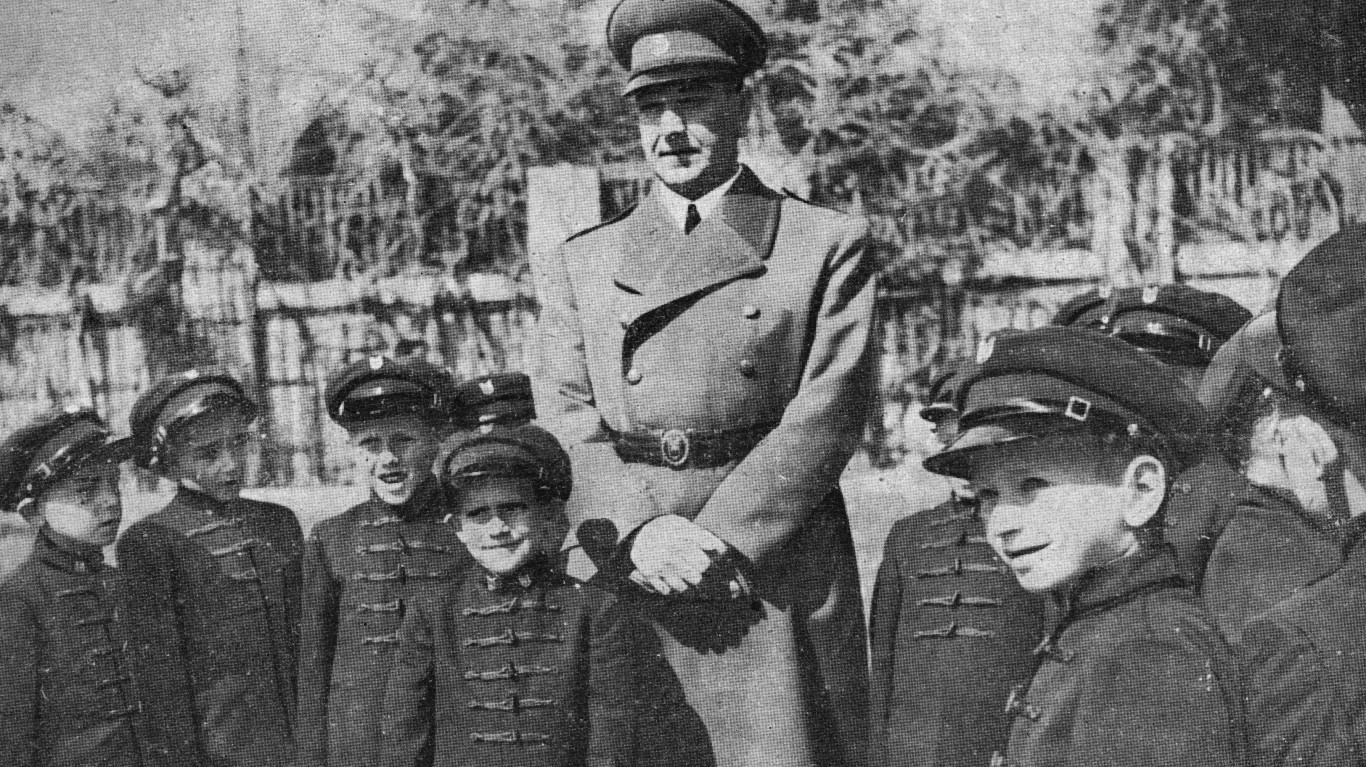
Ante Pavelić
> Country: Croatia
> Time in power: 1941-1945
A fascist leader installed by Hitler and Mussolini after the Axis powers took over Yugoslavia, Ante Pavelić was just as brutal as they were. He instituted a program of repression against Serbs, Romany, and Jews in Croatia. After the war, he escaped to Italy and Austria and eventually to South America and then Spain – where he died from wounds suffered in an assassination attempt.
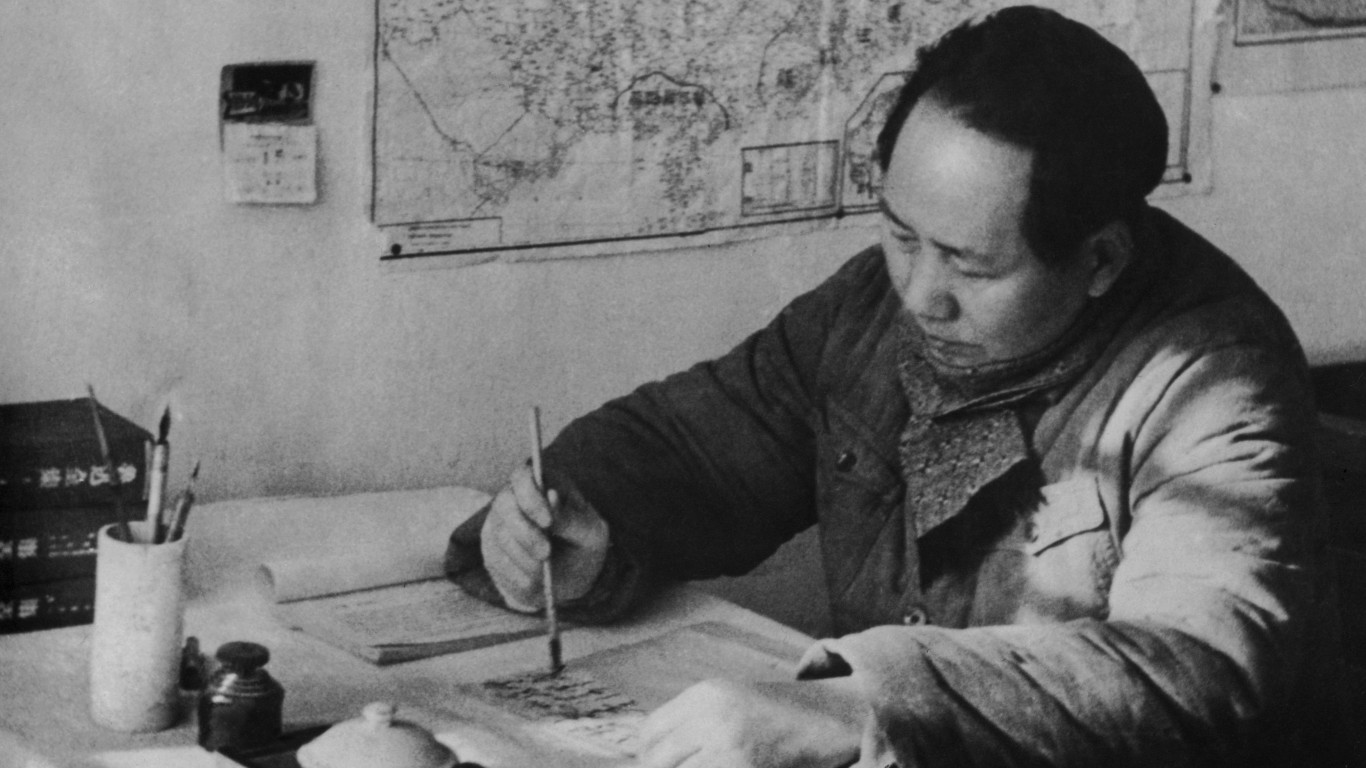
Mao Zedong
> Country: China
> Time in power: 1949-1976
The Father of Communist China, Mao Zedong led the country’s “Great Leap Forward” in the late 1950s, killing millions in his attempt to enforce a Chinese form of communism. His power waned after that debacle, but in 1966 he launched the Cultural Revolution to purge the country of “impure” elements. More than a million died in that program.
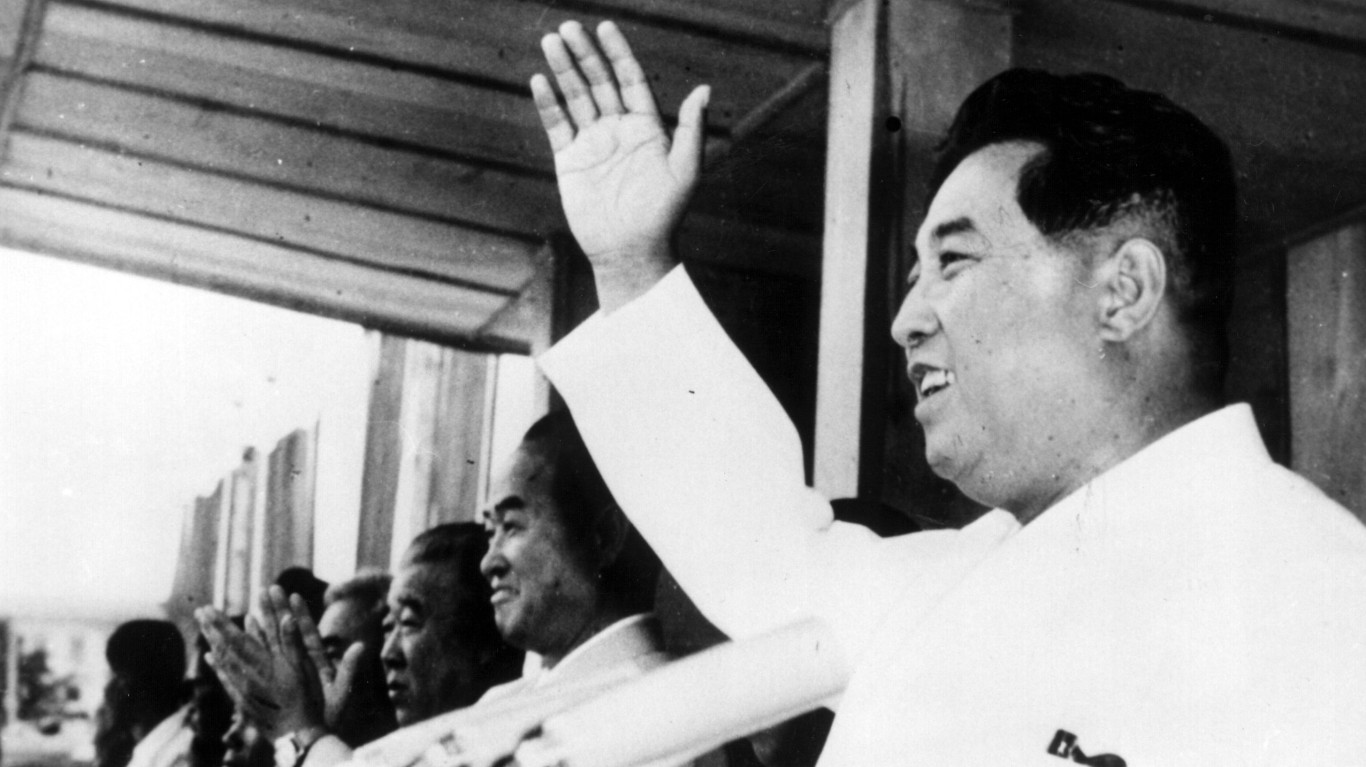
Kim Il-Sung
> Country: North Korea
> Time in power: 1949-1994
As dictator of North Korea Kim Il-Sung led the country into the Korean War. His economic policies resulted in famine. He also murdered opponents and abducted foreign nationals.
[in-text-ad-2]
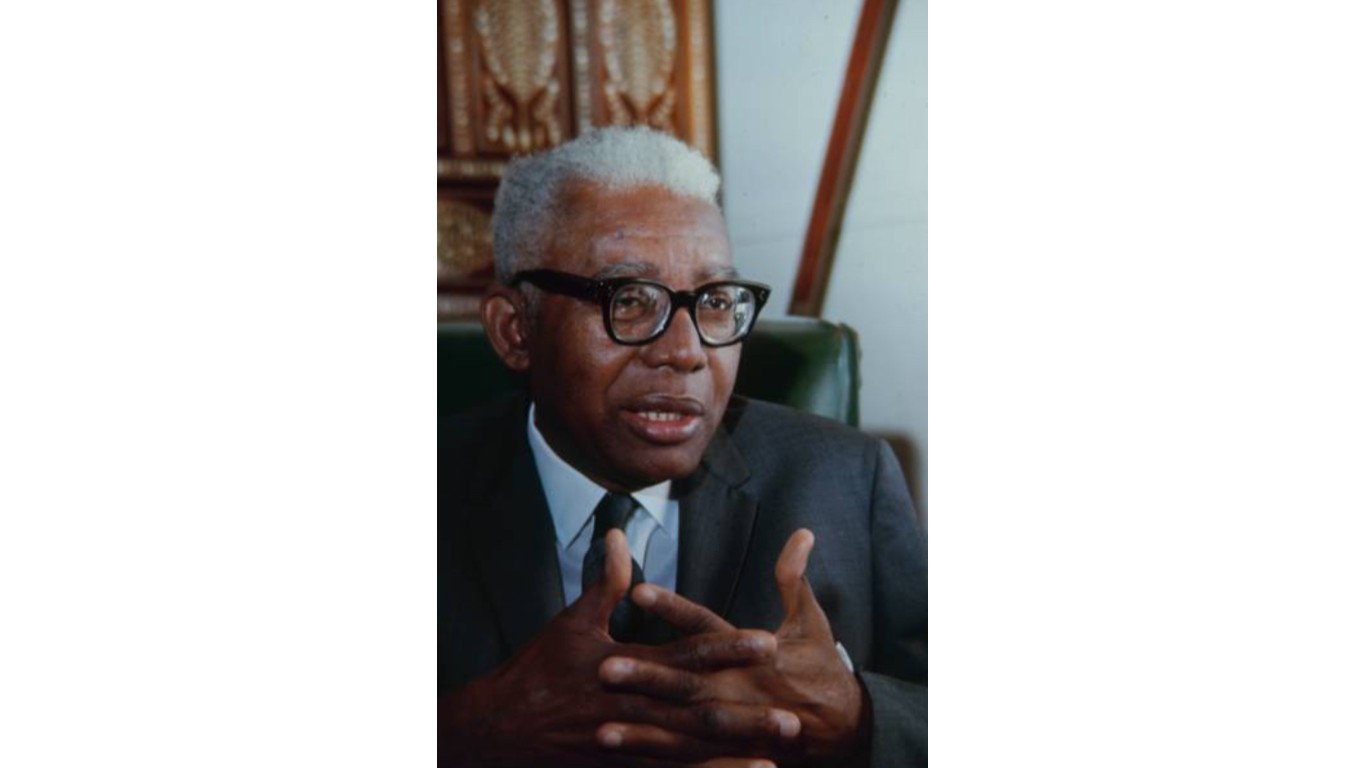
Francois Duvalier
> Country: Haiti
> Time in power: 1957-1971
Francois Duvalier, known as “Papa Doc,” lived well for decades as ruler of Haiti while his people experienced poverty and hunger. Countless Haitians were “disappeared” by his paramilitary police force, the Tonton Macoute.
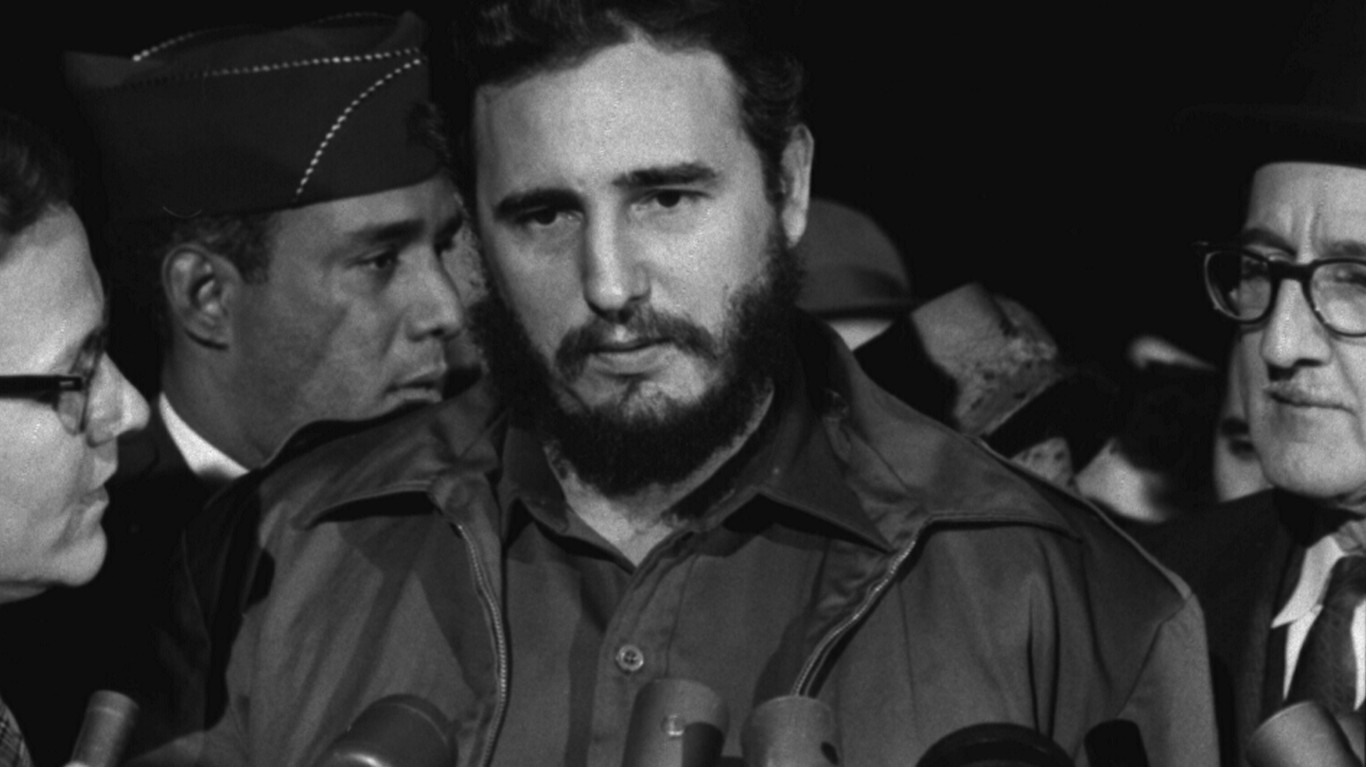
Fidel Castro
> Country: Cuba
> Time in power: 1959-2008
After overthrowing the corrupt dictatorship of Fulgencio Batista, Fidel Castro imposed his own repressive regime on the people of Cuba. He squashed any political dissent and took control of all aspects of Cuban life.
[in-text-ad]
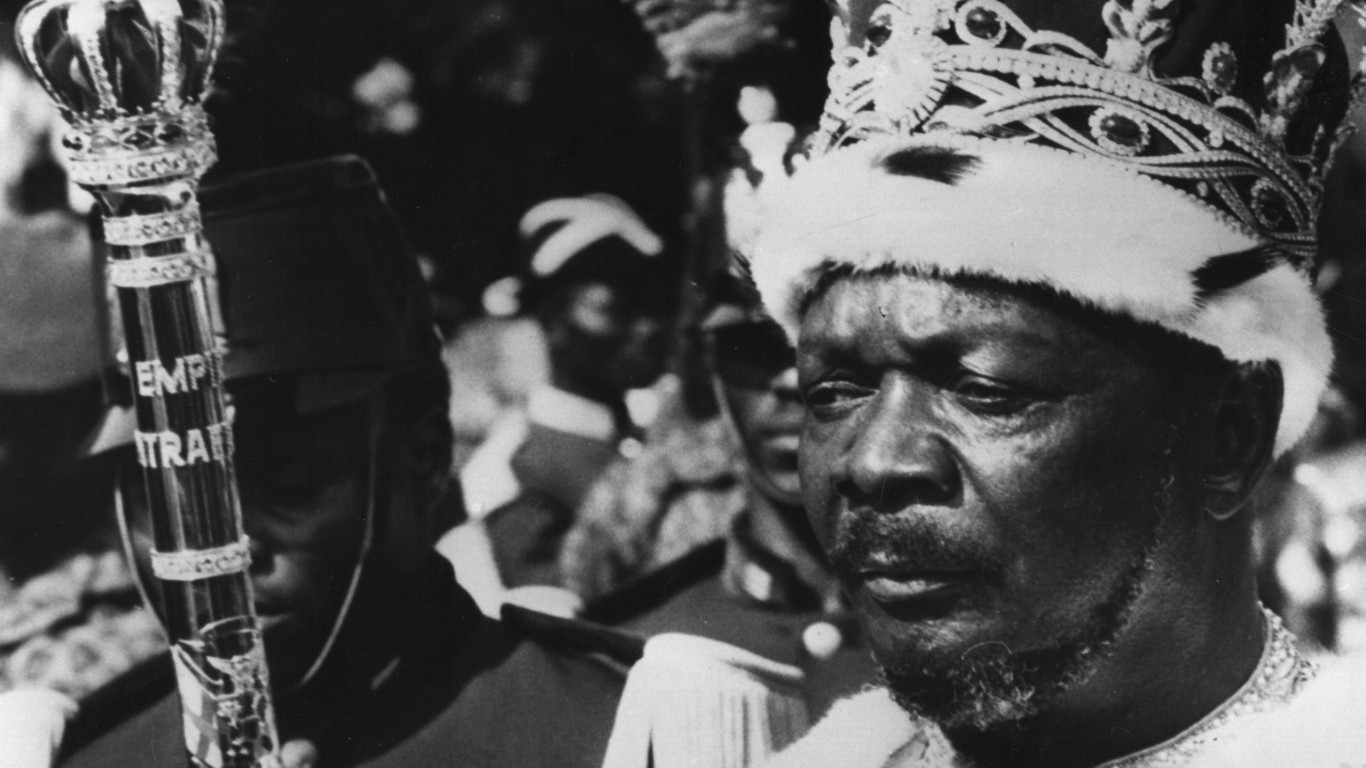
Jean-Bédel Bokassa
> Country: Central African Republic
> Time in power: 1966-1979
Jean-Bédel Bokassa styled himself as Emperor of the Central African Republic. He was accused of cannibalism and feeding his opponents to animals.
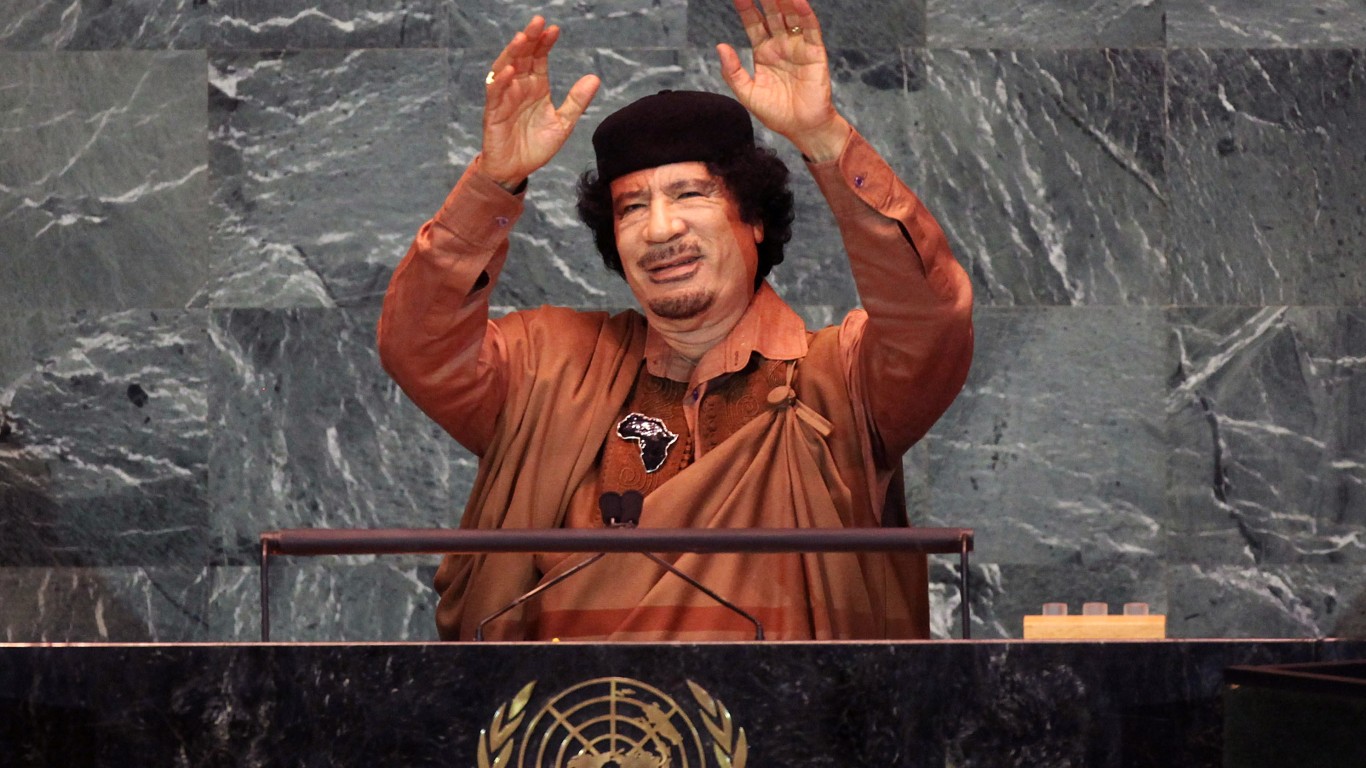
Muammar Gaddafi
> Country: Libya
> Time in power: 1969-2011
Not content to rule his own country with an iron fist, Muammar Gaddafi led his government to finance terrorist activities abroad, including the bombing of a civilian airliner over Lockerbie, Scotland, in 1988. He was overthrown and killed by rebel forces in 2011.

Idi Amin
> Country: Uganda
> Time in power: 1971-1979
A military general, Idi Amin overthrew the elected government of Milton Obote and went on an eight-year rampage that killed an estimated 300,000 civilians. He was expelled from power in 1979 and lived in Saudi Arabia until his death in 2003.
[in-text-ad-2]

Augusto Pinochet
> Country: Chile
> Time in power: 1973-1990
Augusto Pinochet led a coup to overthrow the presidency of socialist Salvador Allende. During his reign, many Chileans “disappeared” and he was accused of the execution of 119 political rivals and of torturing Spanish nationals living in Chile, as well as other human rights violations.
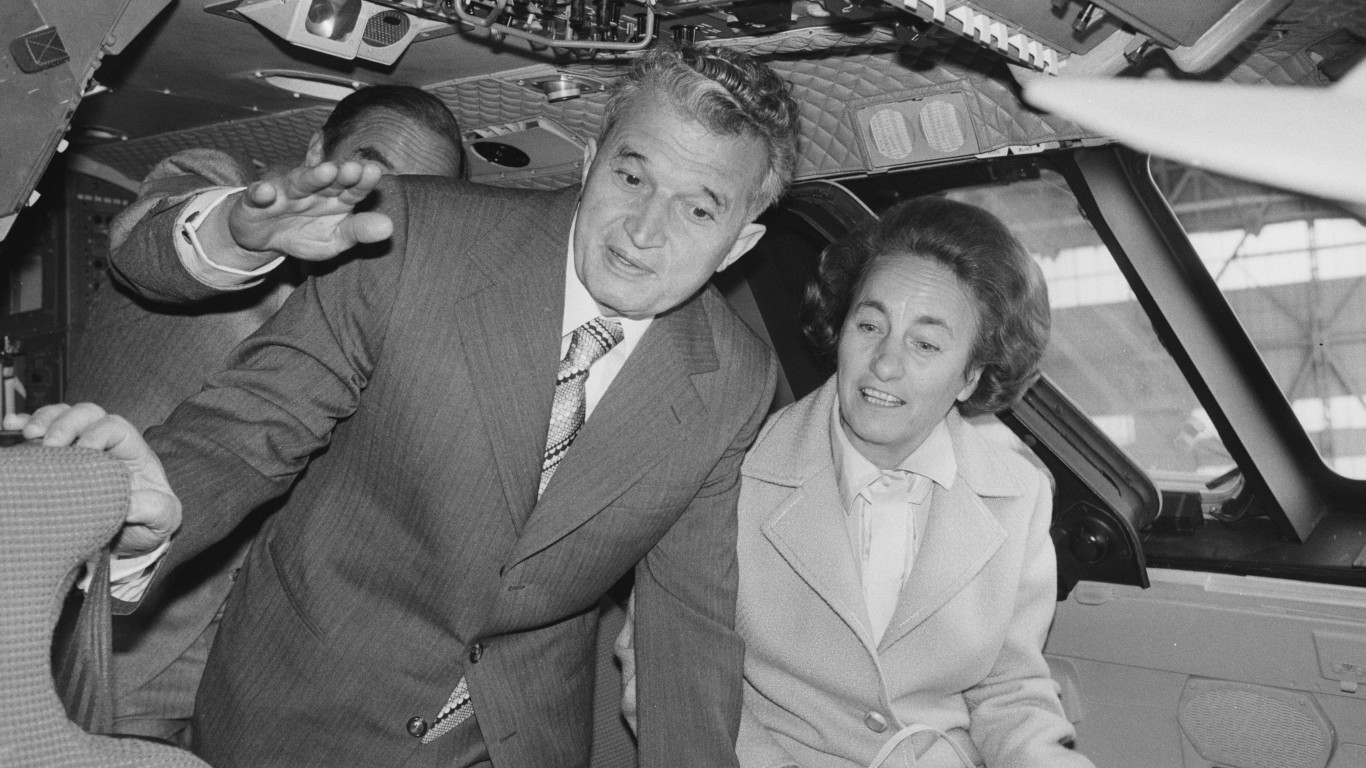
Nicolae Ceaușescu
> Country: Romania
> Time in power: 1974-1989
Although Nicolae Ceaușescu sometimes broke with the rest of the Eastern Soviet Bloc – he condemned the 1968 invasion of Czechoslovakia – the Romanian dictator was nevertheless ruthless with his own people. He formed a brutal secret police known as the Securitate that kept the citizenry in line. In 1977, to stop a miner’s strike, the organization subjected the leaders to chest X-rays to encourage the growth of cancers. After the fall of the Soviet Union, he and his wife were executed by firing squad.
[in-text-ad]
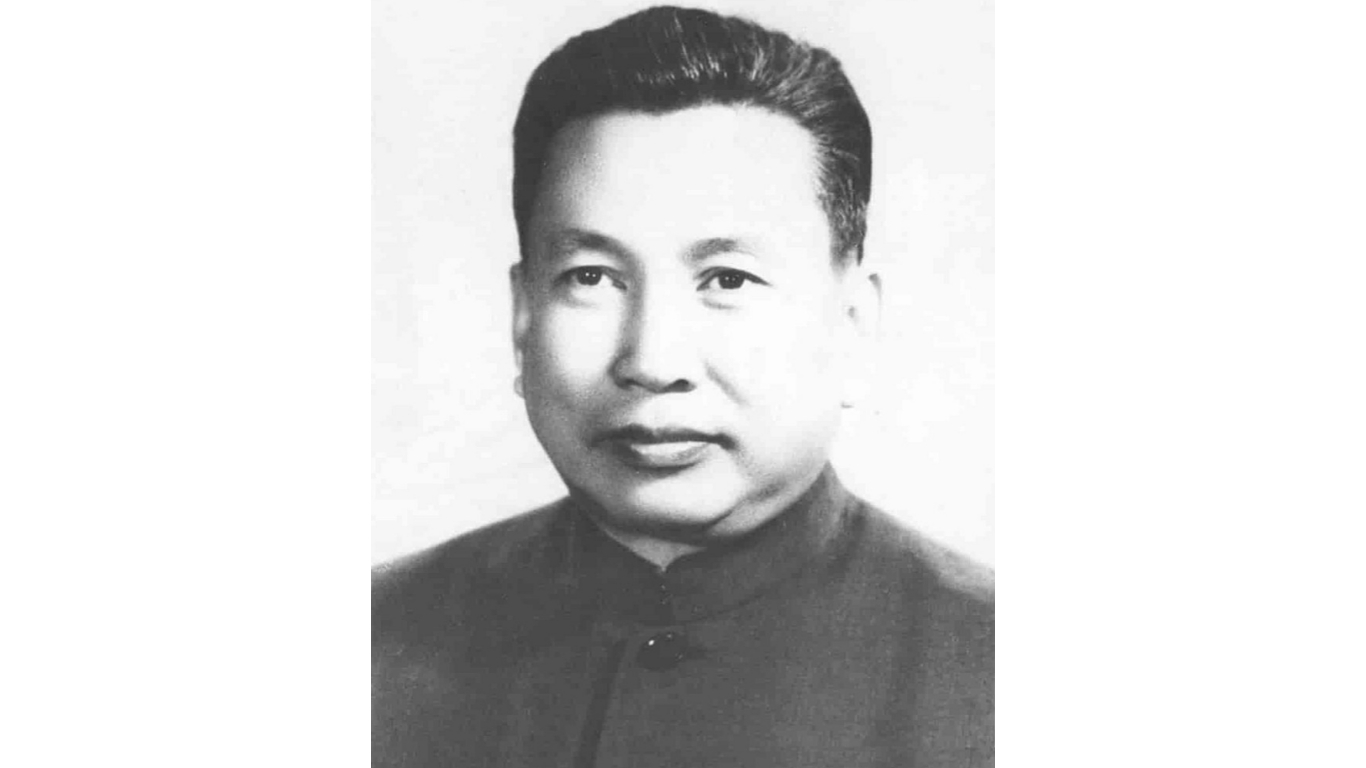
Pol Pot
> Country: Cambodia
> Time in power: 1975-1979
While attempting to establish a communist regime in Cambodia, Pol Pot brought about the deaths of nearly a quarter of the country’s 7 million people through execution, torture, starvation, and disease.

Mengistu Haile Mariam
> Country: Ethiopia
> Time in power: 1977-1991
Known as the “Butcher of Addis,” Mengistu Haile Mariam was the leader of a military junta that carried out a brutal campaign of massacres and torture called the “Red Terror.”
Ayatollah Ruhollah Khomeini
> Country: Iran
> Time in power: 1979-1989
An influential Islamic cleric leader, Ayatollah Ruhollah Khomeini led the revolution to overthrow Iran’s shah, Mohammad Reza Pahlavi in 1979. He reportedly killed many who worked for the shah’s regime or who opposed his own reign. Khomeini sanctioned the taking of the American embassy in Tehran, where U.S. hostages were held for more than a year. He sought to convert Iran into an Islamic theocracy with little contact with the West. Even after his death, he is revered in the country by his supporters.
[in-text-ad-2]

Saddam Hussein
> Country: Iraq
> Time in power: 1979-2003
Saddam Hussein asserted his power soon after taking control of Iraq in July 1979. During an assembly of the Ba’ath Party, he read the names of 68 people who were promptly removed from the room. All were tried and convicted of treason, with 22 sentenced to death. Hundreds of his opponents were later executed.

Robert Mugabe
> Country: Zimbabwe
> Time in power: 1987-2017
After his election as first executive president, Robert Mugabe established a one-party rule, but his administration was marred by a foundering economy and growing unrest. In 2008, he refused to concede he lost an election, prompting riots that killed 85 of his opponents.
[in-text-ad]

Slobodan Milošević
> Country: Yugoslavia
> Time in power: 1989-1992, 1997-2000
Slobodan Milošević was president of Serbia and later the Federal Republic of Yugoslavia during the Yugoslav Wars, which killed more than 200,000 people. He was the first European head of state to be prosecuted for genocide and war crimes.
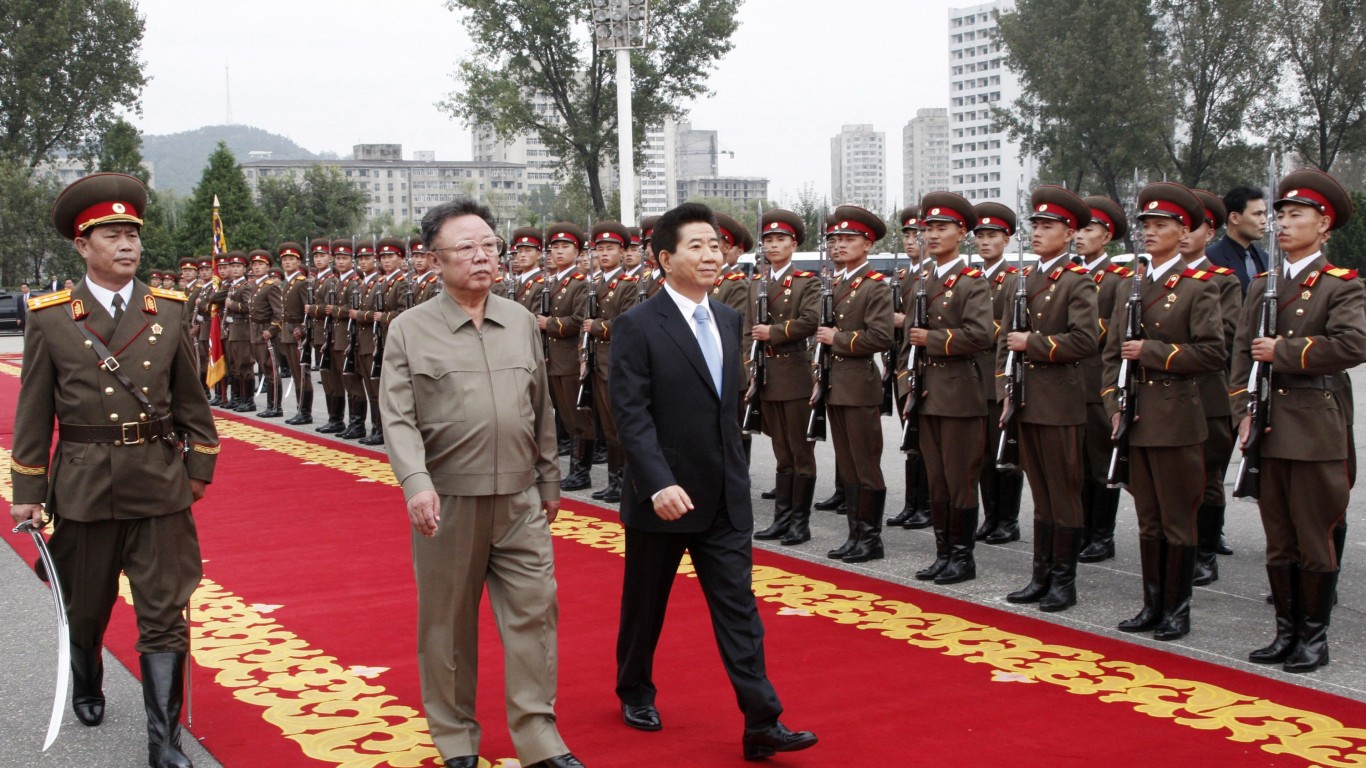
Kim Jong-il
> Country: North Korea
> Time in power: 1994-2011
After the death of his father, Kim Il Sung, Kim Jong-il took over a country already reeling from the fall of the Soviet Union, its one-time supporter. His program of shepherding resources to the military and not the populace led to the deaths of millions.

Kim Jong-un
> Country: North Korea
> Time in power: 2011-
Kim Jong-il’s son, Kim Jong-un, kept up his father’s brutal practices once he gained control of the country after his father died. The Transitional Justice Working Group, a Seoul-based human rights organization, reported that Kim Jong-un oversaw 23 grisly public executions, either by hanging or firing squad, soon after taking control of the country to assert his dominance.
In 20 Years, I Haven’t Seen A Cash Back Card This Good
After two decades of reviewing financial products I haven’t seen anything like this. Credit card companies are at war, handing out free rewards and benefits to win the best customers.
A good cash back card can be worth thousands of dollars a year in free money, not to mention other perks like travel, insurance, and access to fancy lounges.
Our top pick today pays up to 5% cash back, a $200 bonus on top, and $0 annual fee. Click here to apply before they stop offering rewards this generous.
Flywheel Publishing has partnered with CardRatings for our coverage of credit card products. Flywheel Publishing and CardRatings may receive a commission from card issuers.
Thank you for reading! Have some feedback for us?
Contact the 24/7 Wall St. editorial team.
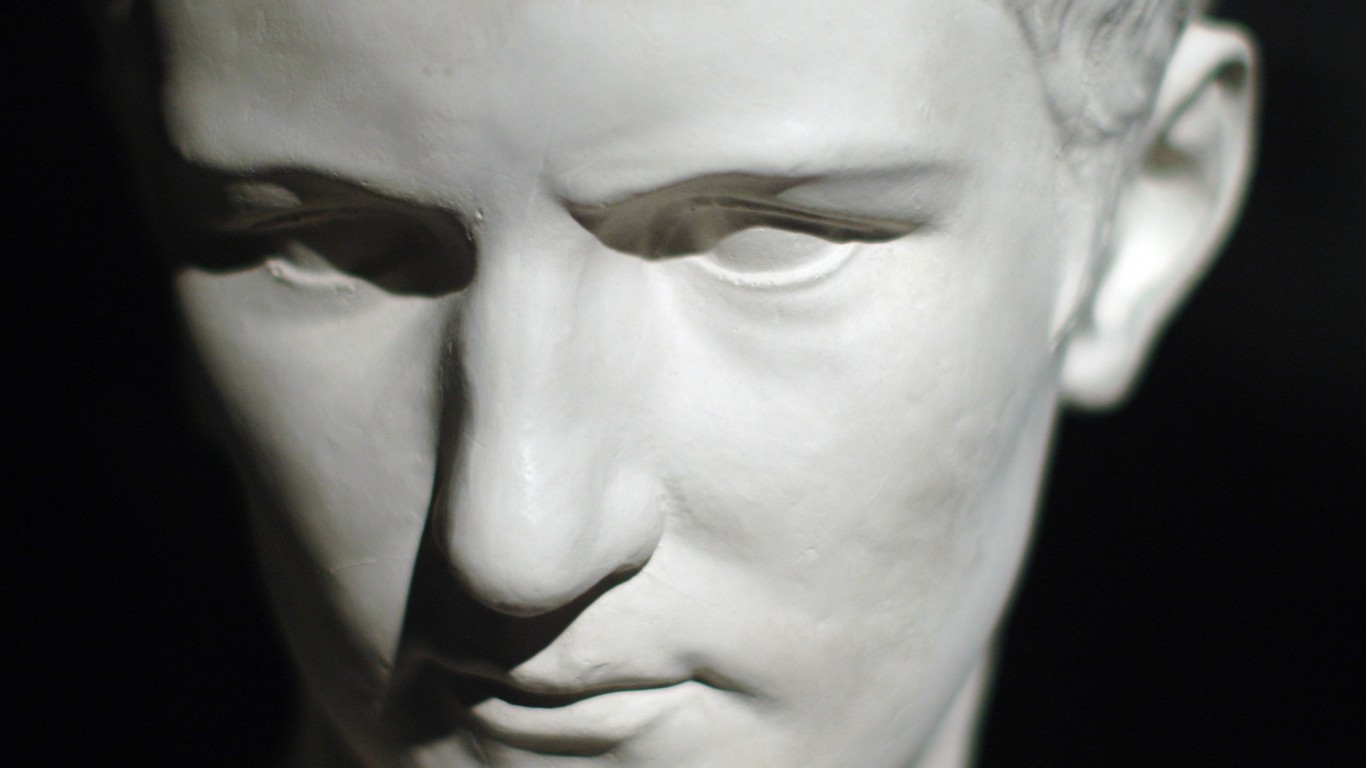


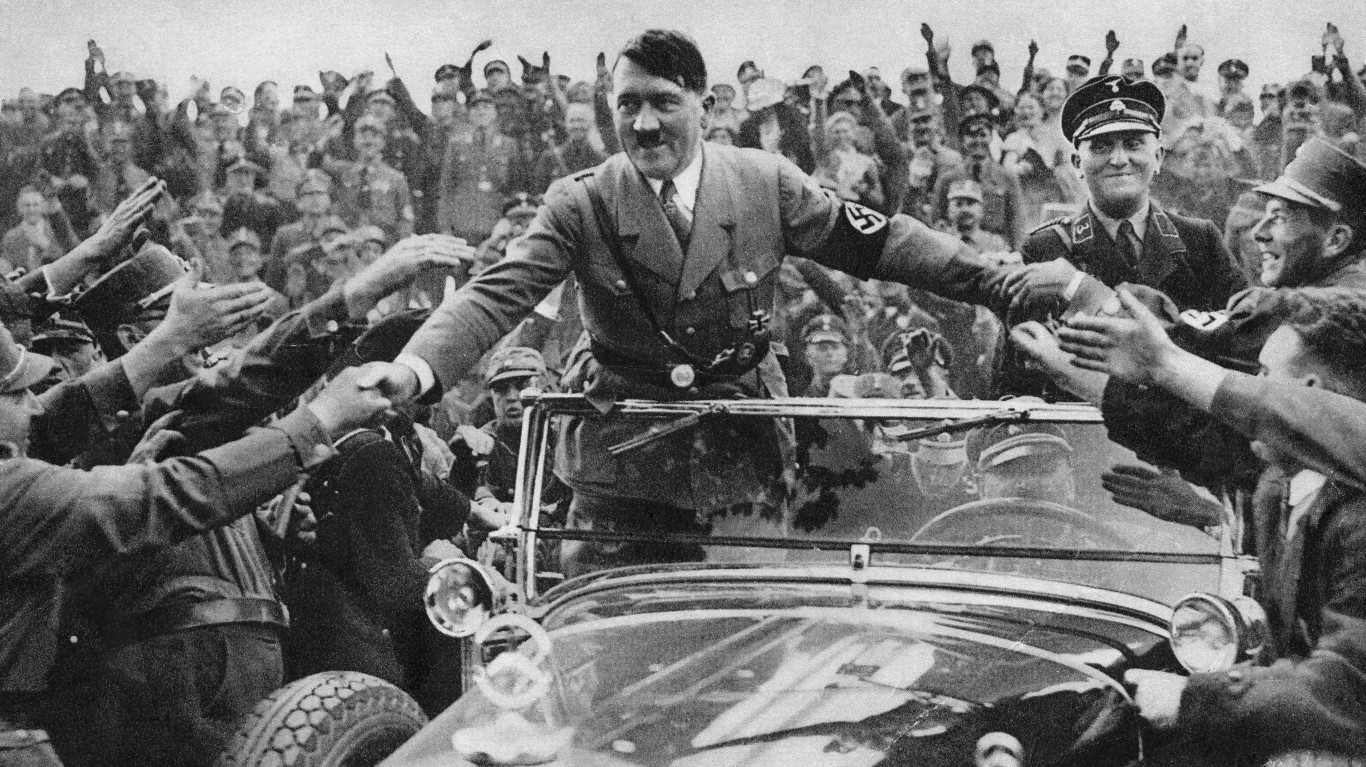 24/7 Wall St.
24/7 Wall St.
